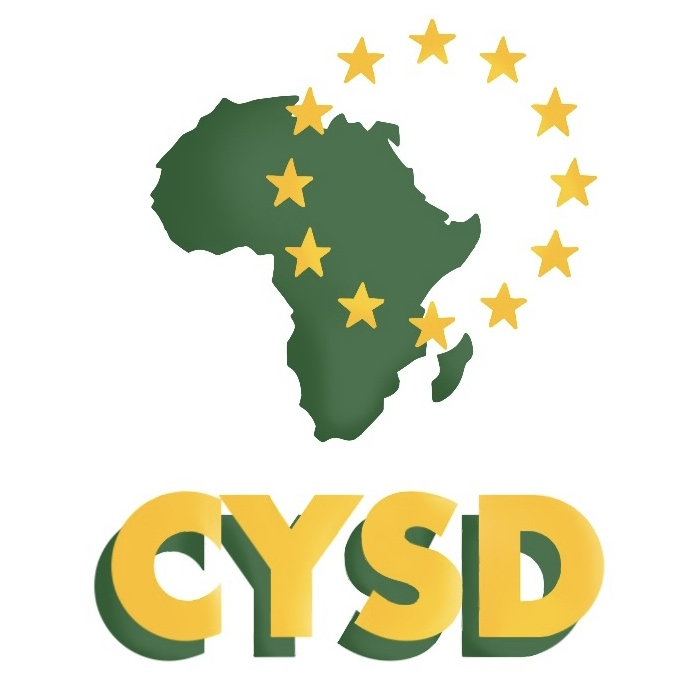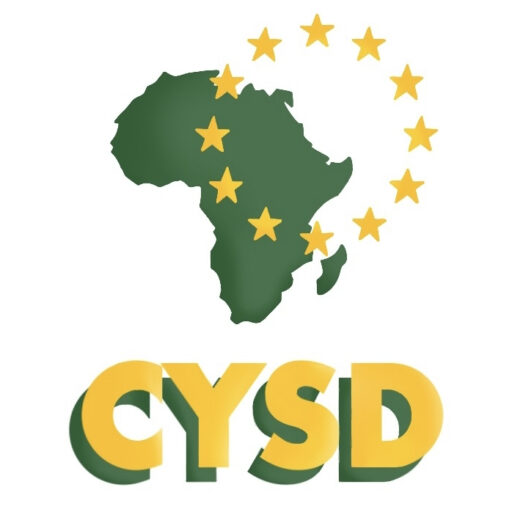Area
Economic
Summary (description and reason to be)
The economic empowerment training for rural vulnerable young people is designed to provide them with essential knowledge and skills related to financial literacy, entrepreneurship, and access to resources. The program aims to uplift these youth by equipping them with the necessary tools to improve their economic status and contribute to community development.
participants will be educated on the basics of managing finances, understanding economic concepts, access to financial resources and developing entrepreneurial skills. Small business management principles will be taught, enabling participants to explore entrepreneurial ventures and manage their own businesses effectively.
Interactive group activities play a vital role in reinforcing the learning experience. Through case studies of successful economic empowerment projects, participants will gain valuable insights into real-world applications of the knowledge acquired during the training.
Lastly, by equipping them with these skills, the training aims to enhance their economic prospects, promote self-sufficiency, and contribute positively to the overall development of their communities.
Target: Vulnerable Group (VG) and/or type of community
• Vulnerable Young People, which includes adolescents and young adults, particularly those who might have limited access to chances for employment, healthcare, and education;
• Children, particularly those from underprivileged families who may struggle with issues like malnutrition, a lack of access to a good education, and a lack of other basic necessities;
• Families especially those led by single parents or caregivers—can help to foster a nurturing atmosphere for children and young people.
Application setting: context
Rural Uganda faces significant challenges due to high poverty rates, especially among its youth. Limited access to education, healthcare, and essential resources leads to malnutrition and hampers development. The cycle of poverty persists as inadequate education results in unemployment, particularly affecting girls who also contend with early marriages and reproductive health issues. The overall number of unemployed people is 64% younger people (18 to 30). According to data on youth activity, almost half (47%) of young people were neither employed nor enrolled in school. The young unemployment rate is greater than the national figure (10%) at 13% (Wamajji & Mubangizi, 2022). To address this crisis, comprehensive interventions are imperative.
Firstly, investing in practical, locally relevant education and vocational training is crucial. Tailored vocational programs, including agricultural modernization and entrepreneurship training, should be collaboratively designed with local communities to ensure effectiveness. Secondly, diversifying economic opportunities through sustainable agriculture and small-scale businesses can create jobs. Addressing gender disparities by empowering young girls through education and health services is essential. Lastly, fostering partnerships between government, non-profits, and the private sector can optimize resources and amplify the impact of interventions. These efforts, including education, vocational training, economic diversification, gender empowerment, and collaborative partnerships, are vital to breaking the cycle of poverty and unemployment among Uganda’s rural youth.
Objectives
The objectives of training vulnerable young people on economic empowerment in rural Uganda are:
1) To enhance participants’ understanding of financial concepts and tools, enabling them to manage money effectively;
2) To inform participants about available support services, including vocational training, microfinance, and government programs;
3) To nurture entrepreneurial mind-set and skills among participants, encouraging them to explore income-generating opportunities;
4) To instil a sense of resilience and determination in participants, helping them overcome obstacles and setbacks.
Requirements
Flipchart papers, markers, pens, camera and notebooks.
Performance procedures
• Invite participants to propose and agree on ground rules that respect individuals and group dynamics;
• Ice-breaking group activity to get to know each other on a deeper level;
• Group exercise to test learners frequently.
Activities
Activity 1: Understanding Economic Empowerment
Introduction to Economic Empowerment:
“Economic empowerment refers to the process of providing individuals and communities with the resources and opportunities to achieve financial stability, self-sufficiency, and improved quality of life. It involves access to education, employment, financial services, and entrepreneurship support, enabling people to actively participate in economic activities, thereby fostering growth, equity, and poverty reduction”.
◦ Participants will be put in to groups (Each group will summarize the key points and collaboratively creates a document).
Importance of Economic Empowerment:
“Economic empowerment enhances access to education, healthcare, and basic necessities, creating a foundation for sustainable development. Empowered individuals contribute to economic growth, social stability, and overall progress, leading to a more prosperous and equitable society”.
◦ Participants will be engaged in a discussion on the importance of economic empowerment. (They will illustrate the key points on flip charts with guidance from the facilitator).
Economic Empowerment Strategies and Initiatives:
“Strategies and initiatives include microfinance programs, vocational training, and mentorship, enabling individuals to create sustainable livelihoods. Government policies, private sector partnerships, and community-driven efforts play crucial roles in fostering economic self-sufficiency, reducing poverty, and promoting inclusive growth”
◦ Participants will be provided a case study and success story from Emyoga (the government initiative to support the youth).
Activity 2: Financial Literacy and Entrepreneurship
Basics of Financial Literacy:
“Financial literacy will involve understanding essential concepts like budgeting, saving, investing, and managing debt”.
◦ We shall conduct interactive quizzes using flip charts where participants will write their answers. (With help from the facilitator participants will be allowed to correct and learn from each other).
Entrepreneurship Development:
◦ Participants will be divided in to groups, each group will create a presentation outlining a business idea
Activity 3: Interactive Group Activities
Networking and Collaboration Opportunities:
◦ We shall create a networking session where participants will interact with entrepreneurs and document lessons learnt.
Results
• Youth will gain a better understanding of financial concepts, budgeting, saving, investing, and managing money effectively. This knowledge is crucial for making informed financial decisions;
• Entrepreneurship and small business management, participants can develop the skills needed to start and manage their own businesses;
• Increased knowledge on access to financial resources and support;
• Community Development as these young entrepreneurs start businesses and contribute to the local economy;
• Ultimately, the financial empowerment of vulnerable youth can lead to an improved quality of life.
Strengths
• Empowering Communities through empowering young people with entrepreneurship skills to create their own opportunities;
• Breaking the Poverty Cycle, providing entrepreneurship skills enhances young people’s employability, making them less vulnerable to poverty and unemployment;
• Enhancing Financial Literacy, understanding the basics of finance encourages savings habits and wise investment choices, fostering economic stability;
• Promoting Sustainable Development fostering entrepreneurship, the youth can contribute to sustainable economic growth, leading to long-term development in rural areas;
• Fostering Innovation and Creativity Entrepreneurship training encourages creativity, innovation, and problem-solving skills, leading to the development of unique business ideas.
Weaknesses
• Limited access to resources as rural areas often lack access to essential resources such as capital. This limitation can hinder the effectiveness of training programs;
• Low educational levels of some vulnerable youth in rural areas might have limited formal education, making it challenging to grasp complex financial concepts and entrepreneurial skills;
• Lack of infrastructure our rural areas lack proper infrastructure, including reliable electricity supply which can disrupt training sessions.
Difficulties or constrains for its implementation
• Limited Internet Connectivity, rural areas lack stable internet connectivity, hindering access to online resources;
• Limited Literacy Skills as Some youth might have low literacy levels, making it difficult for them to grasp complex financial concepts;
• Lack of Role Models as successful local entrepreneurs or financially empowered individuals to look up to can demotivate youth from aspiring to achieve financial independence.
CRITERIA actors or stakeholder are using to assess it as a “good practice”
• Relevance of the training content and activities to the needs and challenges faced by vulnerable youth in rural Uganda;
• Accessibility of this training to all irrespective of gender, social status, or physical abilities;
• The level of engagement and participation among the youth during the training sessions is crucial;
• The program’s success can be measured by the tangible skills acquired by the participants;
• The program adheres to ethical standards, respects local cultures, and promotes ethical business practices among the youth is essential.
Year and length (duration)
6 hours.
Comments (additional info, remarks)
• Young people’s active participation in this training signifies their commitment to creating positive change in their communities;
• Mastering financial literacy and entrepreneurship skills empowers young people to make informed decisions and nurtures their entrepreneurial spirit;
• This training will be used to nurture young people’s creativity and turn their ideas into practical, viable business plans.
References (Bibliography, URLs, suggested readings)
a Bureau of Statistics. (2016). The National Population and Housing Census. Kampala, Uganda: UBOS.
Ministry of Gender Labour and Social Development. (2016). Uganda National Youth Action Plan. Kampala: Ministry of Gender, Labour and Social Development.
Uganda Bureau of Statistics . (2021). National Labour Force Survey 2021. Kampala: Uganda Bureau of Statistics (UBOS).
Wamajji, R., & Mubangizi, P. (2022). The 2022 National State Of The Youth Report: Assessing Government Investment In Young People. Uganda Parliamentary Forum On Youth Affairs (UPFYA) And National Democratic Institute (NDI).

